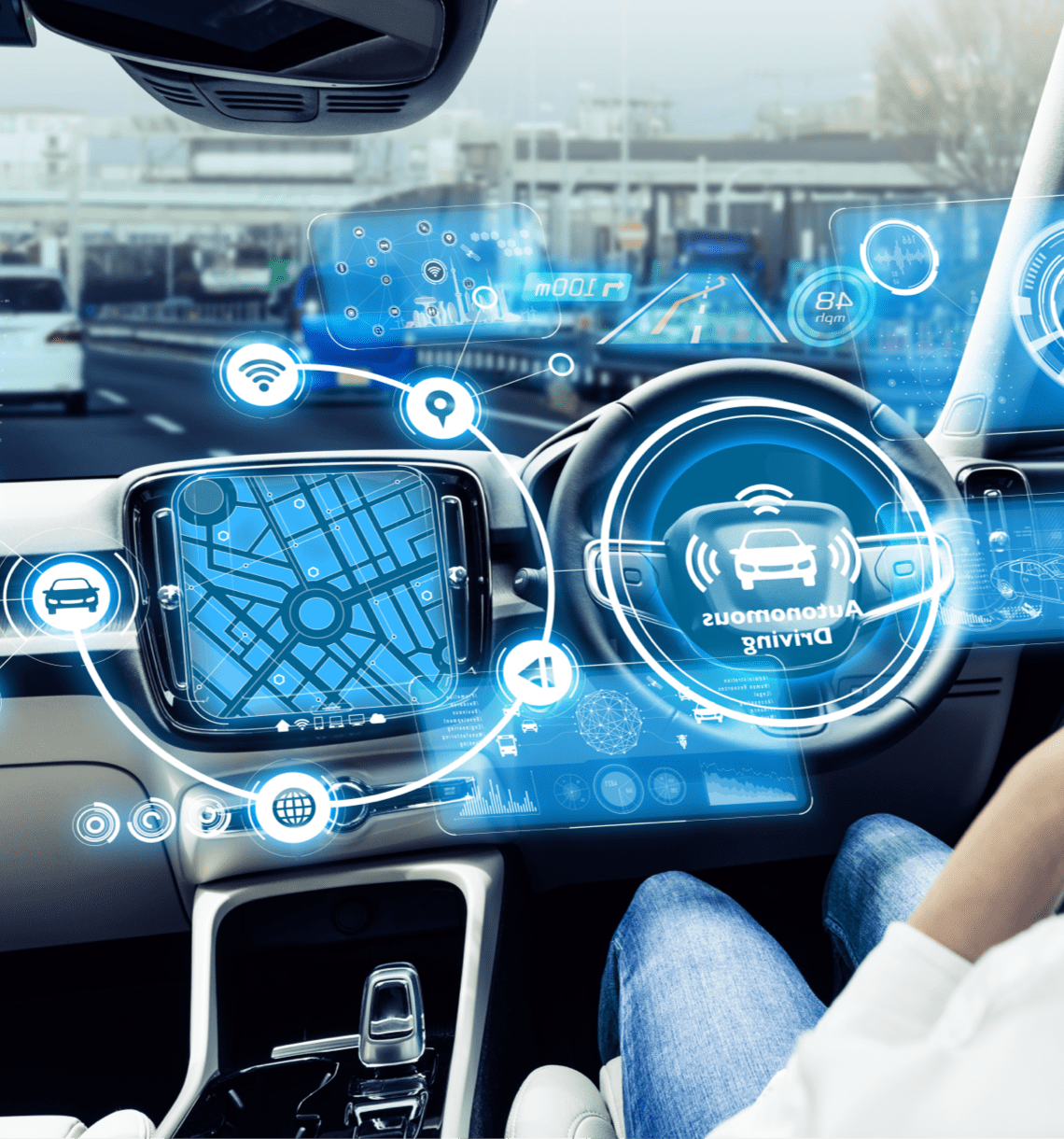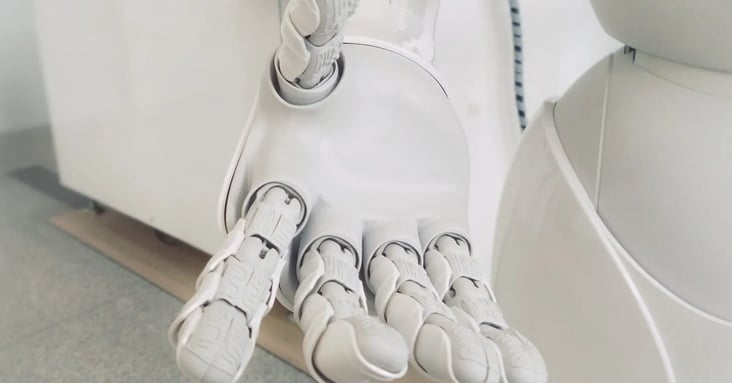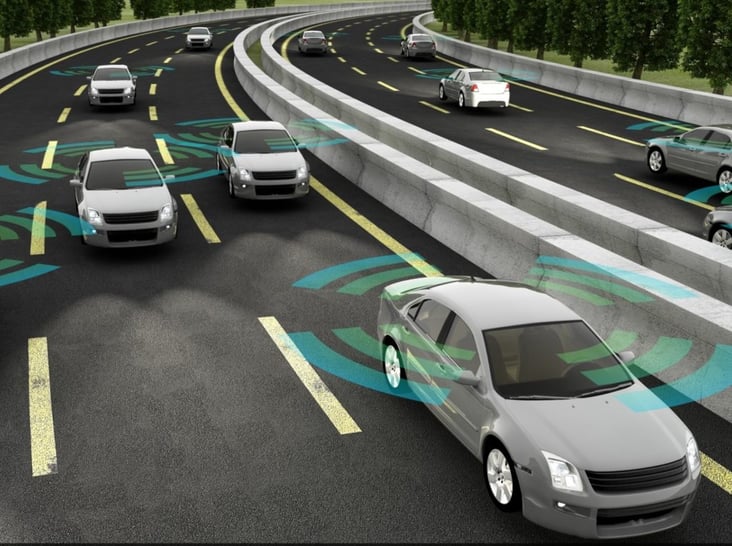Topic / Transportation / Homepage
Transportation

We are in the midst of the most profound disruption of the transportation sector in over a century.
This disruption is being driven by the convergence of several key technologies—Autonomous Electric Vehicle (A-EV) technology and the coming Transport-as-a-Service (TaaS) model.
Transport-as-a-Service will provide 95% of the passenger miles traveled within 10 years from the date of regulatory approval
This emerging business model has the potential to change the transportation landscape, ending individual vehicle ownership and reshaping the world’s energy economy.
Transport-as-a-Service will offer transportation four to ten times cheaper per mile than buying a new car and two to four times cheaper than operating an existing vehicle in 2021.

The disruption of transportation
First, EVs will displace internal combustion engines. Then, A-EVs providing TaaS will transform transportation forever.
By the late 2020s, the first phase of the disruption will cause all new vehicles produced to be electric, as powerful feedback loops force ICE vehicle manufacturing to collapse. This first phase will be overtaken by a second phase of disruption: ICE and private vehicle ownership will be replaced by on-demand A-EVs owned by TaaS fleets, not individuals.
Race to the top
First movers who embrace and accelerate the coming disruption will allow their citizens and economies access to cheaper, safer and more democratizing transportation options, creating an upward spiral of prosperity and opportunity.
The best path forward for decision-makers is to embrace disruptions, and intervene as little as possible except to protect individuals and communities, and to allow the disruption to unfold according to its own internal dynamics.
Witness the transformation
Once available, autonomous technology and TaaS will remove the labor cost of ride service, leading to a cost-per-mile 10 times cheaper than privately-owned vehicles today.
As the utility of old vehicles relying on fossil fuels and a human driver rapidly approaches zero, most people will stop owning vehicles altogether. Instead they will access them when needed. Short-haul aviation will be disrupted by electric aircrafts and overnight road trips in A-EVs. Emissions from shipping will be disrupted by the electrification of ships, along with changes in commodity demand.
Transportation In Depth
Explore these topics to learn more about the Disruption of Transportation
Transportation Reports
TRANSPORTATION REPORT
Rethinking Transportation 2020-2030
In Rethinking Transportation 2020-2030 (published 2017) we showed how the TaaS disruption will have enormous implications across the transportation and oil industries, decimating entire portions of their value chains, causing oil demand and prices to plummet, and destroying trillions in investor value — but also creating trillions in new business opportunities, consumer surplus and GDP growth.
Using TaaS, the average American family will save more than $5,600 per year in transportation costs, equivalent to a wage raise of 10%.
This will keep an additional $1 trillion per year in Americans’ pockets by 2030, potentially generating the largest infusion of consumer spending in history.
The TaaS transport system will reduce personal transport energy demand by 80% and tailpipe emissions by over 90%, reducing pollution, improving public health and saving lives.
By 2030, individually owned ICE vehicles will still represent 40% of the vehicles in the U.S. vehicle fleet, but they will provide just 5% of passenger miles. The geopolitical importance of oil will diminish.

TRANSPORTATION POLICY PRIMER
A Policy Primer for the Coming Transportation Disruption
In our Policy Primer for the Coming Transportation Disruption (published 2017) , we explain how the disruption of road transport by a new business model, Transport-as-a-Service, has the potential to give the economy its biggest boost in a century. TaaS will also help solve persistent social and environmental problems at zero cost. This Primer helps decision makers to make the right choices with regards to this disruption.
TaaS will be life-saving and life-giving for many, enabling people with disabilities, the elderly and low-income families to access more affordable transportation and to participate in the economy.
Road deaths and accidents will be greatly reduced and air quality will dramatically improve. Large expanses of cities devoted to parking and road infrastructure will be freed up, offering an opportunity to redesign cities for the ways we want to live. Transportation could largely be decarbonized by 2030.
A race is developing to lead this transformation. There are benefits that come from global leadership of an industry that affects the entire economy—jobs, taxes, prosperity and influence.
Policymakers will control the critical outcomes of the transformation. They will influence how it will affect existing infrastructure, the cost of TaaS, and the speed and extent of the benefits.

-min.png?width=3864&name=iStock-1131091213%20(1)-min.png)
Transport-as-a-Service (TaaS) will offer transport four to ten times cheaper per mile than buying a new car

Transportation News
Frequently asked questions
The data around this is still in its early days. However vehicles that react faster and never get tired or distracted could dramatically decrease the number of serious accidents every year.
More than 40,000 Americans die each year in motor traffic fatalities. Worldwide, the number is more than 1 million. Manufacturers and regulators of autonomous electric vehicles are keenly aware that A-EVs will need to be noticeably safer than human drivers for them to gain widespread assistance.
Google’s Waymo recently reported having completed 1 million vehicle-miles of fully autonomous travel with “only 2 collisions” and “no reported injuries”. Waypoint - The official Waymo blog: First Million Rider-Only Miles: How the Waymo Driver is Improving Road Safety.
It is too soon—based on one company operating in just a couple of cities (San Francisco and Phoenix) in one country—to say with certainty that AEVs are safer, but they might be. We will need more data.
Read the full answer here
False. The global vehicle fleet turns over roughly every 20 years.
As in other disruptions throughout history, once the new technology becomes overwhelmingly economically competitive, it will naturally replace the older technology as market adoption follows an s-curve. Today, EVs have reached parity and now represent better value for money than ICE vehicles, which means fleet turnover will naturally result in electrification as well.
Autonomous driving technology will further accelerate the pace of adoption because electric and autonomous technologies are complementary. Vehicle utilization will thus shift substantially away from private ownership toward TaaS provided via “robot taxis”, or "robotaxis" for short.
History also shows that supply chain constraints are only ever temporary for materials that are not fundamentally scarce. Recent supply chain bottlenecks in batteries that were exacerbated during the COVID-19 pandemic, for example, have already begun to yield as new investment expands supply to meet demand.
Read the full answer here
Everywhere in the world, people want to be able to move around quickly, safely, and at a low cost.
We are now seeing rapid adoption of electric cars in China, including small EVs that are dramatically cheaper than what new cars used to cost.
Sales of electric two- and three-wheelers are already growing exponentially in much of the world.
Families that were previously only able to afford a used ICE are now buying new EVs and those that used two-wheelers are stepping up to cars.
We see the robotaxi disruption playing out in a similar manner around the world - with fleets first being deployed in the large urban areas where AEV-developing companies are located (like San Francisco and Shanghai) and then spreading to other areas.
Read the full answer here
False. EV costs are declining consistently over time as market adoption grows exponentially, following a typical industry experience curve.
As we predicts, EVs are on target to pass cost parity in terms of total lifetime vehicle cost in most regions this year, and in some regions (such as China) cost parity has already been reached.
Read the full answer here
False. Technology changes in the automotive industry have happened - quickly - many times before.
In 1908, the year that Ford’s assembly line started, there were about 200,000 cars in the US and 20 million horses—or 100 hundred times as many horses as cars. Even if each car drove six or seven times as much distance each year as a horse, then cars were responsible for only about 6% of combined vehicle miles that year.
But by 1923, just 15 years later, there were 18 million horses and 13 million cars. So, cars were likely responsible for more than 80% of vehicle miles.
We went from essentially all horse-powered travel to all car-powered travel in only a decade and a half.
In 1963, fewer than 10% of new cars had seat belts, but they were in more than 95% of new cars by 1966. Disk brakes became popular over just four years in the 1960s. Power steering went from about 20% of new cars in 1955 to over 80% in 1970.
Now, new cars are changing from combustion powered to battery electric. (In some parts of the world, like Norway, this market transition is largely complete.) Rapid revolutions are the norm in the automotive industry.
Read the full answer here
It is clear that there will not be a one-for-one replacement of individually owned passenger cars with autonomous electric vehicles.
Our 2017 report Rethinking Transportation 2020-2030 estimates that even if the passenger-mile demand for travel in the U.S increases by 50% over the 2015 level, all of this greater travel demand could be served by about 18 million individually-owned cars and about 26 million robotaxis. These numbers are uncertain and depend on the assumptions made about robotaxi utilization and economics. However it is clear that there will not be a one-for-one replacement of individually owned passenger cars with autonomous electric vehicles.




-min-2.png?width=732&name=Copy%20of%20RethinkX%20-%20In%20the%20News%20(1)-min-2.png)

-min-1.png?width=732&name=Copy%20of%20RethinkX%20-%20In%20the%20News%20(6)-min-1.png)



.png?width=732&name=Copy%20of%20RethinkX%20-%20In%20the%20News%20(2).png)
.png?width=732&name=Copy%20of%20RethinkX%20-%20In%20the%20News%20(1).png)
-min.png?width=732&name=Copy%20of%20RethinkX%20-%20In%20the%20News%20(15)-min.png)

-min.png?width=732&name=Copy%20of%20RethinkX%20-%20In%20the%20News%20(11)-min.png)
-min-1.png?width=732&name=Copy%20of%20RethinkX%20-%20In%20the%20News%20(1)-min-1.png)















